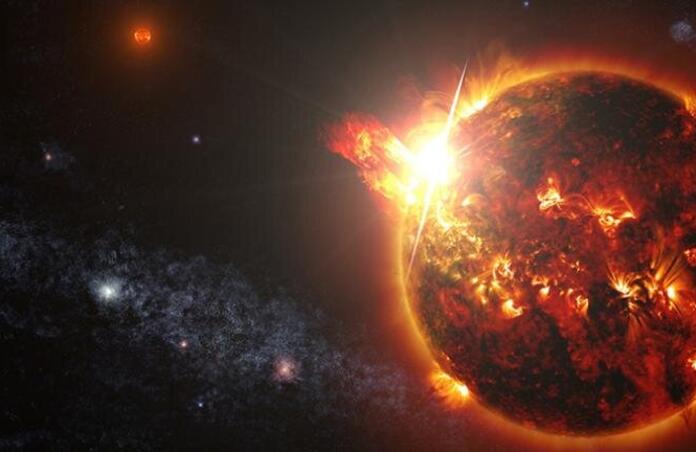red dwarf stars emit more powerful flares than initially thought

M-type stars, or red dwarfs are the most common star in the universe, comprising 75% of the stars in our galaxy. Several exoplanet surveys have suggested that these stars are especially good at forming earth-like rocky planets that orbit within their stars habitable zone, making them promising candidates for habitable planets. However, a recent study has uncovered that red dwarf stars produce flares that are much more powerful than previously thought, causing implications for potential habitability.
"Few stars have been thought to generate enough UV radiation through flares to impact planet habitability. Our findings show that many more stars may have this capability," said first author Vera Berger, who led the research while based at the University of Hawai'i and who is now based at the University of Cambridge.
The team made use of archival data from the GALEX space telescope, looking for flares amongst 300,000 nearby stars within 100 parsecs of the sun. GALEX is a NASA mission that simultaneously observed most of the sky at near- and far- UV wavelengths from 2003 to 2013. The telescope has since been decommissioned.

"Combining modern computer power with gigabytes of decades-old observations allowed us to search for flares on thousands and thousands of nearby stars," said co-author Dr. Michael Tucker from Ohio State University.
Typical rocky planets in these systems orbit in the circumsolar habitable zone, which is at close distances for cool red dwarfs. Due to these close-in orbits, many of these planets are tidally locked such that the same hemisphere is always facing the star. Because of this, the star-facing hemisphere will be constantly subject to the powerful flares, leading to a stripping of its atmosphere. Therefore, the planets ability to support life will be prohibited. On the other hand, such flares can contribute to the formation of RNA, which is the building blocks for life.
The team detected 182 flares from 158 stars at nearby and far UV wavelengths, the study detailing that the far UV emission is 3 times more energetic than typical assumed levels, reaching up to 12 times the expected energy levels. "A change of three is the same as the difference in UV in the summer from Anchorage, Alaska to Honolulu, where unprotected skin can get a sunburn in less than 10 minutes," said co-author Benjamin J. Shappee from the University of Hawai'i.
The reason behind this discrepancy is still unknown, however the team believes it could be because the flare radiation is stronger at specific wavelengths, pointing towards the presence of carbon and nitrogen.
"This study has changed the picture of the environments around stars less massive than our sun, which emit very little UV light outside of flares," said co-author Jason Hinkle.
More data from space telescopes is needed to study the UV light from stars to ultimately better our understanding of the source of this emission.
--
Cover image: Scott Wiessinger/NASA
Journal source: Vera L Berger, Jason T Hinkle, Michael A Tucker, Benjamin J Shappee, Jennifer L van Saders, Daniel Huber, Jeffrey W Reep, Xudong Sun, Kai E Yang. Stellar flares are far-ultraviolet luminous. Monthly Notices of the Royal A
